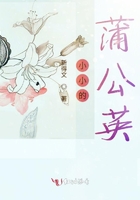Whether the nurserymen agree with Dr.Gray or not when he says these balls of white flowers possess "no beauty," the fact remains that numbers of the shrubs are sold for ornament, especially a golden-leaved variety.But the charm certainly lies in their fruit.(Opulus = a wild cranberry tree.) When this is plentifully set at the ends of long branches that curve backward, and the bladder-like pods have taken on a rich purplish or reddish hue, the shrub is undeniably decorative.Even the old flowers, after they have had their pollen carried away by the small bees and flies, show a reddish tint on the ovaries which deepens as the fruit forms; and Ludwig states that this is not only to increase the conspicuousness of the shrubs, but to entice unbidden guests away from the younger flowers.Who will tell us why the old bark should loosen every year and the thin layers separate into not nine, but dozens of ragged strips?
MEADOW-SWEET; QUAKER LADY; QUEEN-OF-THE-MEADOW(Spiraea salicifolia) Rose family Flowers - Small, white or flesh pink, clustered in dense pyramidal terminal panicles.Calyx 5 cleft; carolla of 5 rounded petals; stamens numerous; pistils 5 to 8.Stem: 2 to 4 ft.high, ****** or bushy, smooth, usually reddish.Leaves: Alternate, oval or oblong, saw-edged.
Preferred Habitat - Low meadows, swamps, fence-rows, ditches.
Flowering Season - June-August.
Distribution - Newfoundland to Georgia, west to Rocky Mountains.
Europe and Asia.
Fleecy white plumes of meadow-sweet, the "spires of closely clustered bloom" sung by Dora Read Goodale, are surely not frequently found near dusty "waysides scorched with barren heat,"even in her Berkshires; their preference is for moister soil, often in the same habitat with a first cousin, the pink steeple-bush.But plants, like humans, are capricious creatures.
If the meadow-sweet always elected to grow in damp ground whose rising mists would clog the pores of its leaves, doubtless they would be protected with a woolly absorbent, as its cousins are.
Inasmuch as perfume serves as an attraction to the more highly specialized, aesthetic insects, not required by the spiraeas, our meadow-sweet has none, in spite of its misleading name.Small bees (especially Andrenidae), flies (Syrphidae), and beetles, among other visitors, come in great numbers, seeking the accessible pollen, and, in this case, nectar also, secreted in a conspicuous orange-colored disk.When a floret first opens, or even before, the already mature stigmas overtop the incurved, undeveloped stamens, so that any visitor dusted from other clusters cross-fertilizes it; but as the stigmas remain fresh even after the stamens have risen and shed their abundant pollen, it follows that in long-continued stormy weather, when few insects are flying, the flowers fertilize themselves.
Self-fertilization with insect help must often occur in the flower's second stage.The fragrant yellowish-white ENGLISHMEADOW-SWEET (S.ulmaria), often cultivated in old-fashioned gardens here, has escaped locally.
In long, slender, forking spikes the GOAT'S-BEARD (Aruncus Aruncus - Spiraea aruncus of Gray) lifts its graceful panicles of minute whitish flowers in May and June from three to seven feet above the rich soil of its woodland home.The petioled, pinnate leaves are compounded of several leaflets like those on its relative the rose-bush.From New York southward and westward to Missouri, also on the Pacific Coast to Alaska, is its range on this Continent.Very many more beetles than any other visitors transfer pollen from the staminate flowers on one plant to the pistillate ones on another; other plants produce only perfect flowers - the reason different panicles vary so much in appearance.
Another herbaceous perennial once counted a spiraea is the common INDIAN PHYSIC or BOWMAN'S-ROOT (Porteranthus trifoliatus -Gillensia trifoliata of Gray) found blooming in the rich woods during June and July from western New York southward and westward.Two to four feet high, it displays its very loose, pretty clusters of white or pale pink flowers, comparatively few in the whole panicle, each blossom measuring about a half inch across and borne on a slender pedicel.A tubular, 5-toothed calyx has the long slender petals inserted within.Owing to the depth and narrowness of the tube, the small, long-tongued bees cannot reach the nectar without dusting their heads with pollen from the anthers inserted in a ring around the entrance or leaving some on the stigmas of other blossoms.Later, the five carpels make as many hairy, awl-tipped little pods within the reddish cup.The leaves may be compounded of three oblong or ovate, saw-edged leaflets, or merely three-lobed, and with small stipules at their base.
WILD RED RASPBERRY
(Rubus strigosus) Rose family Flowers - White, about 1/2 in.across, on slender, bristly pedicels, in a loose cluster.Calyx deeply 5-parted, persistent in fruit; 5 erect, short-lived petals, about the length of the sepals; stamens numerous; carpels numerous, inserted on a convex spongy receptacle, and ripening into drupelets.Stem: 3 to 6 ft.
high, shrubby, densely covered with bristles; older, woody stems with rigid, hooked prickles.Leaves: Compounded of 3 to 5 ovate, pointed, and irregularly saw-edged leaflets, downy beneath, on bristly petioles.Fruit: A light red, watery, tender, high-flavored, edible berry; ripe July-September.
Preferred Habitat - Dry soil, rocky hillsides, fence-rows, hedges.
Flowering Season - May-July.
Distribution - Labrador to North Carolina, also in Rocky Mountain region.
Who but the bees and such small visitors care about the raspberry blossoms? Notwithstanding the nectar secreted in a fleshy ring for their benefit, comparatively few insects enter the flowers, whose small, erect petals imply no hospitable welcome.















